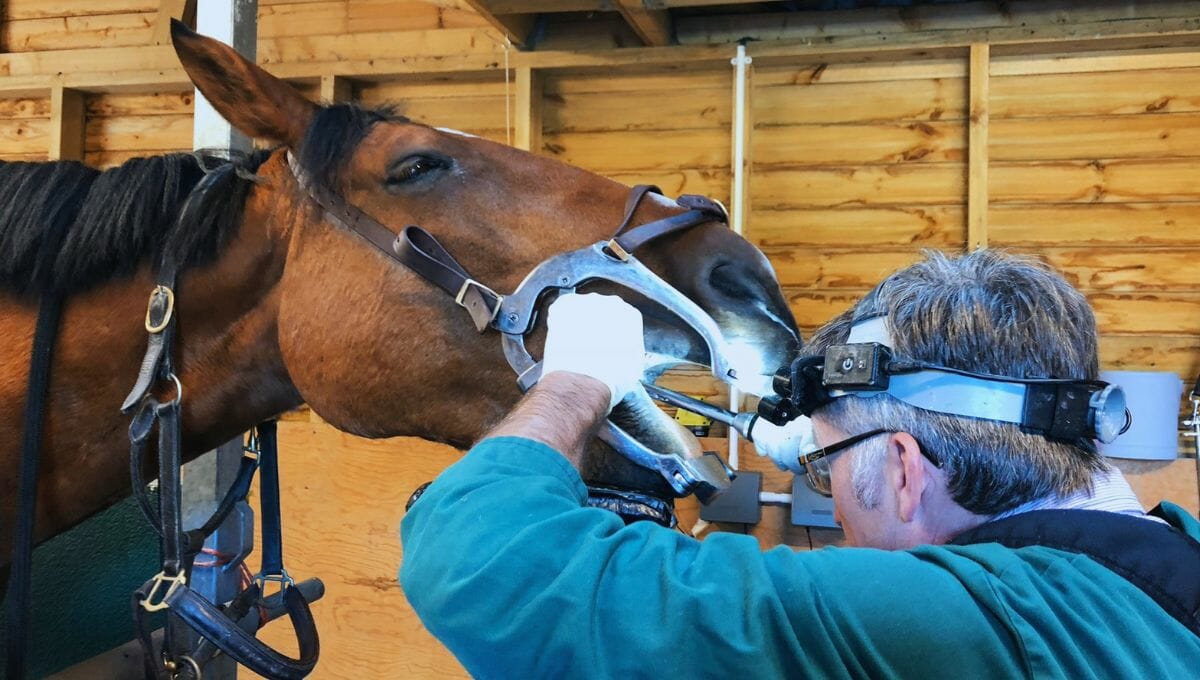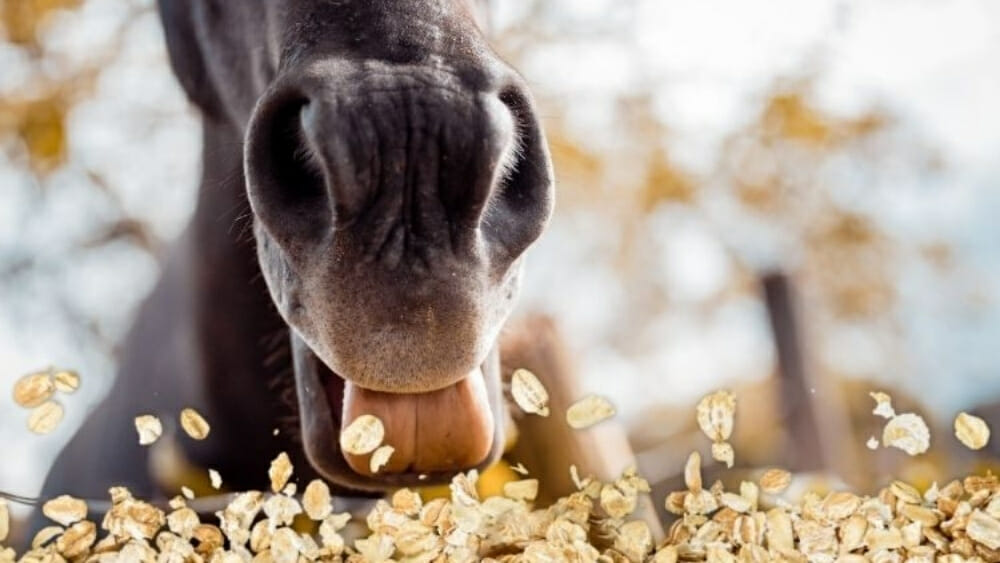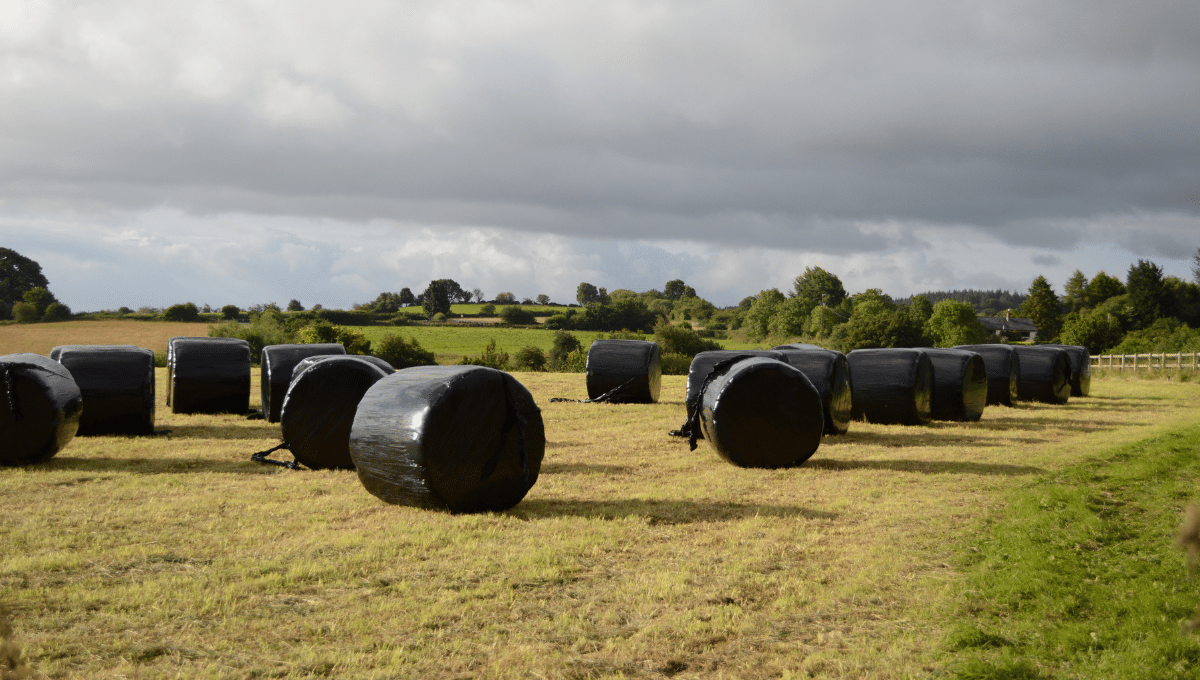What are the facts about understanding dentistry for the older or geriatric horse? We can now feed and care for the old horse beyond when their teeth wear out but that is when dental care becomes even more important for the old horse to maintain their health and keep their horse teeth working well.
Decades ago horses didn’t live past their teeth but advances in horse care, particularly horse dewormers and antibiotics have changed all that. Where once a horse was considered elderly in their teens and early twenties now horses are regularly living well into their thirties.
In this article Andy Peffers, B.Vet Med MRCVS. EDT, owner of the North Wales Equine Dental Practice gives you the important facts about old horse teeth.
Andy is a veterinary surgeon and a qualified equine dental technician with over 20 years of experience. He is a member of the British Association of Equine Dental Technicians and has acted as chief examiner for the BEVA/BVDA examination for equine dental technicians. He has passed further examinations and is an Advanced Veterinary Practitioner in Equine Dentistry.
1. Why do horse teeth need dental care?
Horses’ teeth are hypsodont, this means they are continually erupting throughout their life to compensate for the wear and attrition on their teeth. In addition to this, the horses’ upper jaw is wider than the lower jaw. This results in sharp edges on the outside edges of the upper maxillary cheek teeth and on the inside edges of the lower mandibular cheek teeth. Therefore because of this, all horses need a routine regular dental checkup and examination at least every 12 months.
2. What is unique about old horse teeth?
A lot of horse owners believe that as a horse gets older they need less dental attention, whereas the opposite is actually true. The majority of older horses need more frequent dental attention.
In a survey of disease prevalence in geriatric horses in the United Kingdom, 200 horses over the age of 15 were examined and dental abnormalities were identified in 95.4% of horses. However, the perceived incidence of dental disease amongst owners is much less. The conclusion from this is that a lot of dental disease goes undiagnosed in older horses and ponies. This unique need for old horses present that highlights the need for more regular dental checkups.
3. Do old horses get loose teeth?
A six-year-old horse will have cheek teeth that are up to 8cm in length. This includes the length of the tooth below the gum line. If these teeth continually erupt and are worn down by 2 or 3mm a year then twenty years later this tooth will now only be 2-3cm in length. The reduced length of the horse teeth means they are not as firmly attached. The teeth can then become loose, causing discomfort and problems with eating. In this situation, they will need to be extracted by an equine dental technician or vet.
4. Do missing horse teeth matter?
Sometimes an old horse will lose a tooth which has become loose through the natural wearing process. The tooth may be lost as a result of the effects of ageing as outlined above or can be the result of disease processes and surgery that have happened throughout the horse’s life. When a horse has missing teeth, not only is the horse’s chewing ability compromised, the missing tooth causes an uneven wear pattern because the tooth opposite the gap grows too long and may interfere with jaw movement.
5. Does the wear of horse teeth cause a problem?
Horse teeth worn down to the root are called ‘cupping out’. This is where the entire reserve crown has been worn away and there are no enamel ridges left in the middle of the cheek teeth. As there are no enamel ridges, just cementum in the middle of the cheek tooth, these teeth feel as smooth as marble. Also because in the middle of the tooth there is now only cementum, which is softer than enamel, the middle of the tooth wears quicker than the outer edge of the tooth ( which still has an enamel ring), thus causing a cupping effect.
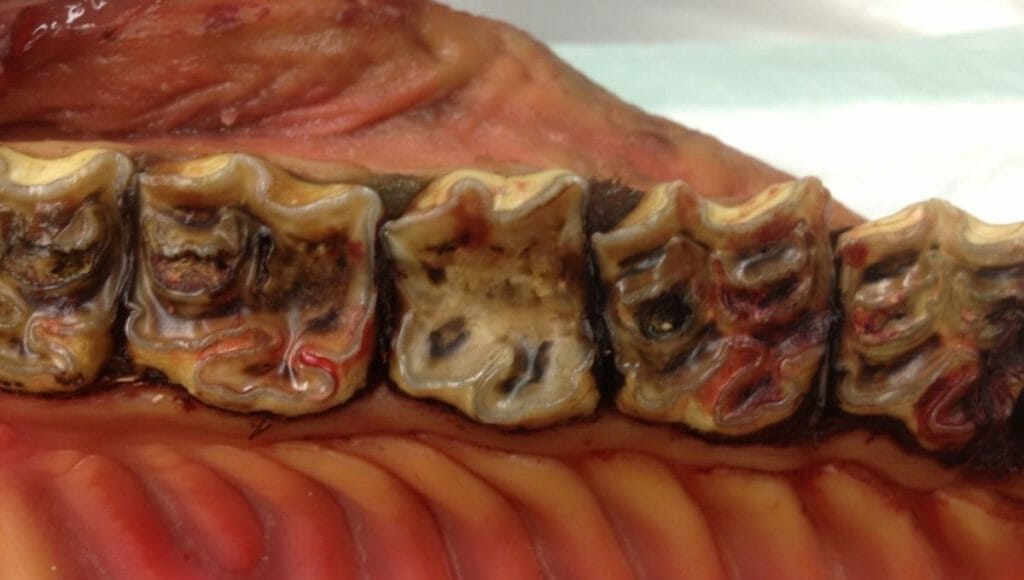
6. What are senile horse teeth diastema?
A diastema is a gap between two horse teeth that is not normally present. Older horses are prone to diastema because as they age their teeth are worn down. The tooth nearer the root is not quite as wide as a young horse’s crown. Also, the angulation of the tooth is slightly less.
Both these factors added together mean that in the geriatric horse, the six cheek teeth aren’t pushed quite as tightly together allowing gaps or diastema to appear between the teeth. These are known as senile diastema.
Food can get trapped and packed into the gap. The food decomposes and ferments releasing acid causing erosion of the gingiva, leading to periodontitis and the formation of periodontal pockets. These periodontal pockets are very painful and need to be treated every 3-6 months.
Treatment involves flushing all of the trapped food out of the diastema between the horse teeth and treating the associated periodontitis with chlorhexidine dental paste. Regular flushing by the owner and a change of diet can help improve the management of senile diastema.
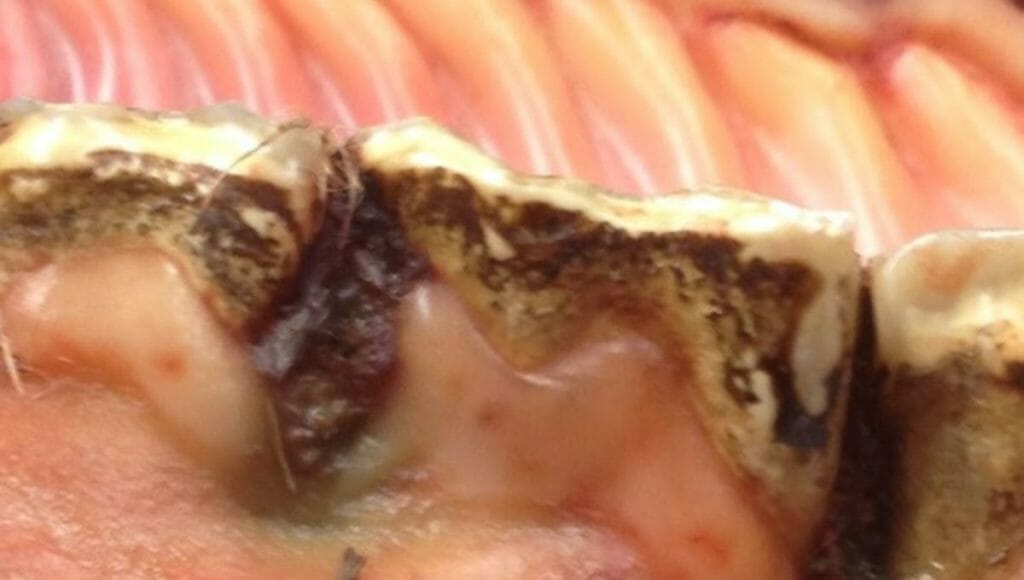
7. How does EOTRH disease affect old horse teeth?
Equine Odontoclastic Tooth Resorption and Hypercementosis (EOTRH) affects mostly older horses, generally 15 years or above, and its prevalence increases with the age of the horse. It is more common in thoroughbreds and warmbloods and probably affects more geldings than mares.
EOTRH has also been reported in donkeys and mules. It affects primarily incisors but can affect canines.
The disease is caused by cells called odontoclasts becoming overactive causing resorption of the tooth. At the same time, cementoblasts are also activated depositing extra cement in an attempt to stabilise the tooth. This condition is very painful and affected horses struggle to bite food such as carrots and long grass with their incisors. Horses with this condition can present with gum inflammation, swollen gums due to hypercementosis and also loose and painful incisors.
Unfortunately at the moment, the only treatment for this condition is surgical extraction of all loose and painful incisors. However although a lot of owners worry about this treatment option, horses, even ones who have had all their incisors extracted, do really well following the removal of painful incisors.
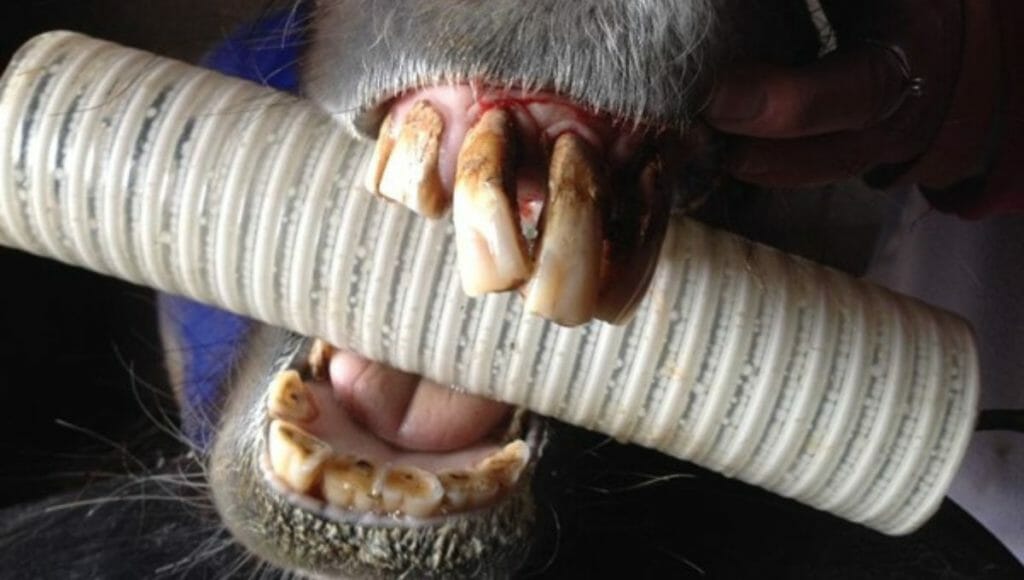
8. How does temporomandibular joint disease affect old horses?
The temporomandibular joint (TMJ) is the hinge joint that allows the mandible to move for chewing. It is a unique and well-adapted joint. It has a hinge action to allow the jaw to open and close, but more importantly, it is also well-designed for sideways motion. The sideways motion is vital, as the power stroke of the horse’s chewing cycle is sideways.
Diseases of the equine temporomandibular joint are rarely reported, although there is some evidence that older horses can get osteoarthritis of their TMJ.
Young horses can chew for up to 16 hours per day. However anecdotal evidence suggests that older horses chew for a shorter amount of time. It has been proposed that this may be due to TMJ pain or arthritis.
Therefore in conclusion older or geriatric horses have a higher prevalence of dental disease. This fact combined with an increased incidence of other non-dental health problems such as Cushing’s, liver or kidney disease indicates careful attention has to be paid to the diet of the older horse. You can get more information to help you with old horse nutrition and feeding in this article.
However, with regular good quality dental care and the correct quality diet many geriatric horses are living into their thirties.
Andy has written a comprehensive book covering all things ‘Equine Dentistry’. Topics covered include dental anatomy and physiology, why we rasp horse teeth, dental nerve blocks, restorations or fillings, various imaging techniques and the different methods of extracting equine teeth. You can purchase the book here

